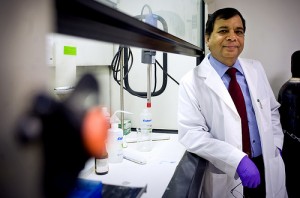Mosquitoes transmit the parasite, Plasmodium, that causes malaria, one the deadliest diseases on Earth. Recent research could turn the tables on the mosquitoes by using fungal parasites to kill them before they can do any damage.
800px-Larve_de_moustique Some species of fungus feed on the mosquitoes before they even develop into their flying stage. Mosquitoes live in the water before turning into buzzing blood suckers. By using the fungus to kill off mosquito larvae in the water, the insects never get a chance to infect anyone with malaria.
via Discovery News.

